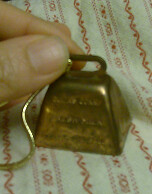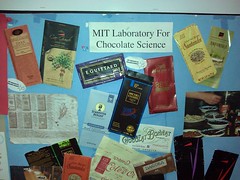Make Way for Goslings
The Washington State Department of Transportation always lets us in on unusual activity around our roadways. Last month a semi-trailer truck rolled over on I-5. WSDOT sent a crew out to help unload and reload the 20 tons of watermelon that were enroute from Arizona to Canada . And they took pictures. More recently, they posted video of the Washington State Police protecting a family of geese taking a walk on busy I-90. They were herded off at the next exit.
Cerium Oxide Polish
Glass artists who polish their works to a high shine with cerium oxide are getting hit with a hugh price increase from a shortage of the rare-earth element. China has reduced exports of cerium oxide and prices at one supplier have gone from $10 per pound eight months ago to $66 today. A mine in California that closed in 2002 after it couldn’t survive against the cheap pricing from China has now reopened to help with supply. There are alternative techniques and materials for polishing, but cerium oxide is the fastest. From the environmental perspective, perhaps China does have some good interests behind the shortage as they say the reduction came from tighter controls on the damage caused by mass-extracting rare earths.
It’s so retro…
When I read the phrase “old-school blogger Andy Baio” (in a Wii U article) I figured it was time for a comeback. After all, old school stuff is a favorite subject of this weblog, whether it’s typewriters or drive-ins, and if blogging is now a retro medium, well, all the better. While we’re on the subject of nostalgia, Gael Fashingbauer Cooper (another “old-school blogger” of Pop Culture Junk Mail) has a book out called “Whatever Happened to Pudding Pops” (here’s the blog). But enough about other old-schoolers, where have I been for half a year? Well, I switched to part-time at work, got my kid through kindergarten at our public school, and haven’t finished that notorious “Tiger Mom” book yet. If you’re thinking “if you’re working part-time, you should have had more time for blogging!” then you’re smarter and more organized than I am. Now that our son is on a typical school schedule, I get to deal with playdates, soccer, packed lunches, and homework (yes, they give homework in kindergarten now). Also chess and piano (remember I haven’t finished the Tiger Mom book yet so I don’t know any better, but I do know that another Asian kid in his class has chess, Chinese school, piano, and violin, so I’ve already ruined his chances for the Ivy League). It has been a fun and valuable transition, but, if you’ve been paying attention, you know my postings are typically 1) well-researched and 2) not the same topic everyone else has already posted. That takes time. I might loosen up on those. I also remember Anil Dash tweeting or posting (see, I’m already letting the research thing go) something that I interpreted as: so many bloggers just link to other content and don’t create any new content themselves. That stumped me for a bit because while I enjoy pointers to other things (it’s the core of the Web), new content is where I want to add value to the Web. But, again, that takes time. So, I’m back, but likely not regularly, and we’ll see where it goes. Thanks for reading and thanks for waiting!
The Paper Newspaper: Shrink or Disappear?
Broadsheet newspapers have been decreasing their “web width” from the old standard 54 inches to 48, 46, and as small as 44 inches over the last five or so years. The reduction saved costs, was advertised as easier to handle, and didn’t require new presses. Poynter reports than an even smaller option is available: the “three-around”. Current presses are retrofitted to a system that so that “plate cylinders print three sheets in a single revolution, rather than two”. The result is a paper size that isn’t quite a tabloid, but is significantly smaller than even today’s shrunken broadsheets. The three-around saves newsprint and prints more papers in less time. But the machinery changes are an investment — perhaps better spent on electronic delivery formats?
Top Chef Masters: the scientists
On a recent “Top Chef Masters” episode, each chef was assigned a scientific principle and a scientist for the Elimination Challenge. The scientists served as both consultants and sous chefs, explaining the scientific principle each chef had selected and helping to create dishes to demonstrate it. They’re writing about their experiences at the weblog Science Fare. There’s also a set of posts from the artist who created the posters used as backdrops during the demonstrations. The acidity poster lists the pH of several foods (also stomach acid, blood, and bleach) . During the episode, Chef Hugh Acheson made a crack about how his partner scientist, Augustine Urbas, had learned how to fry okra at MIT. It reminded me that I had heard mention of an MIT cooking course. “Kitchen Chemistry” has been taught by Patricia Christie in MIT’s Experimental Study Group since 2000. The 2009 course materials, syllabus and recipes (including Liquid Nitrogen Ice Cream!) are online at MIT OpenCourseWare. The textbook is, of course, Harold McGee‘s “On Food and Cooking“. On my recent visit to the MIT campus, I spotted a poster for the Laboratory for Chocolate Science (“the only group on campus that orders more than 500lbs of chocolate a year”).
Bells from Connecticut
 East Hampton, Connecticut was known as “Bell Town, USA” years ago when the town produced 90% of the world’s sleigh bells. The bell companies benefited from a law mandating that all sleighs, which run silent in the snow, use bells to warn pedestrians. With manufacturing shifted overseas, what’s left in East Hampton out of what used to be over 30 bell foundries is the proud sixth generation of the Bevin Brothers who’ve been making bells in Connecticut since 1832. If you’ve heard a Salvation Army bell ringer, you’ve heard a Bevin Brothers hand bell. The product line includes cow bells, mechanical door bells, prize fighter bells, and of course the classic sleigh bells. They say they’re the only company in the U.S. manufacturing just bells and they’ve stayed inventive by looking out for new business opportunities like supplying the bells for Poochie Pets (dog doorbells), another Connecticut company. I own a tiny Bevin Bill, pictured here (sorry for the fuzzy snapshot) which advertises Guida’s Milk, a New England dairy. It became our family “sick bell” for the bedside table and my mom handed it over to me when I was recovering from my c-section. Now that I’ve seen its model on the Bevin Brother’s website our little bell carries even more sentimental value. I think I better shine it up!
East Hampton, Connecticut was known as “Bell Town, USA” years ago when the town produced 90% of the world’s sleigh bells. The bell companies benefited from a law mandating that all sleighs, which run silent in the snow, use bells to warn pedestrians. With manufacturing shifted overseas, what’s left in East Hampton out of what used to be over 30 bell foundries is the proud sixth generation of the Bevin Brothers who’ve been making bells in Connecticut since 1832. If you’ve heard a Salvation Army bell ringer, you’ve heard a Bevin Brothers hand bell. The product line includes cow bells, mechanical door bells, prize fighter bells, and of course the classic sleigh bells. They say they’re the only company in the U.S. manufacturing just bells and they’ve stayed inventive by looking out for new business opportunities like supplying the bells for Poochie Pets (dog doorbells), another Connecticut company. I own a tiny Bevin Bill, pictured here (sorry for the fuzzy snapshot) which advertises Guida’s Milk, a New England dairy. It became our family “sick bell” for the bedside table and my mom handed it over to me when I was recovering from my c-section. Now that I’ve seen its model on the Bevin Brother’s website our little bell carries even more sentimental value. I think I better shine it up!
Mike Rowe Works
“He’s been spit on, spewed at, kicked, scratched, pushed around, beat on, dumped on, and then the guy gets up for the next round every single time. This guy never says no, he isn’t afraid of everything, and he gets injured – really injured. And on his worst day, he’s still the toughest guy in Hollywood.” – Craig Piligian, Executive Producer of “Dirty Jobs”
“Dirty Jobs” is a success because of Mike Rowe and Mike Rowe is a success because of “Dirty Jobs.” He’s earned it. After several years of making sure he only took jobs with plenty of vacation, Rowe is now working constantly, and he’s become an advocate for the blue collar workers that he shadows on the show. The San Francisco Chronicle provides a nicely in-depth look at Rowe’s career and how “Dirty Jobs” came into being. A supplemental blog post reveals the lurid details behind his firing from QVC, related to inappropriate behavior with a nun doll.
Beaver Relocation
Sometimes beavers and their dams are welcome and sometimes they aren’t. The Lands Council of Spokane, Washington is a nonprofit organization that advocates for the Inland Northwest forests, water, and wildlife. Their Beaver Project identifies locations that would benefit from dams to store spring runoff and reintroduces beavers to those areas. The beavers come from places where they are considered a nuisance, such as when they cut down too many trees for their human neighbors, and would have been euthanized. They’ve successfully relocated 27 beavers so far.
Retr0Bright
Not too long ago (I’m saying that so I don’t feel old) computers and their peripherals came in one choice of color and 99% of the time that was beige. Over the years, the beige ABS plastic turned yellow and even darker thanks to flame-retardant chemicals. A discovery from Commodore Amiga enthusiasts in Germany soon spread through the vintage computer community, reaching LifeHacker in 2009. Before and after photos of plastics treated with the hydrogen peroxide solution show startling results. Dubbed Retr0Bright, the formulas and background information are collected on a wiki. I stumbled upon this not in the context of whitening old computers, but looking into how to restore vintage Lego. My husband’s sister sent us her substantial collection of Lego (so large that most of it is still hidden in the garage awaiting good behavior reinforcement opportunities). Some of the white and clear pieces have yellowed over time, and while they are perfectly usable (except for the one I warped in the dishwasher), perhaps we’ll try restoring them to pristine condition one day.
Seattle Eye
Seattle Center, the location of city’s iconic Space Needle, will install a 200-foot tall observation wheel in April and leave it up for the Center’s 50th Anniversary in 2012. This isn’t the only manifestation of the global mega wheel trend in Seattle. The owner of Pier 57 plans to install one on his waterfront site and he’s not pleased that the city decided to put up their own first. The city responded that theirs will be gone before he can get his up (they said he has a “long permitting process” ahead of him, which I’m sure they didn’t mean in an obstructive way). Seattle is partnering with Great City Attractions, a British company that is operating wheels in the UK, Ireland, Australia, and Singapore, which holds the record for tallest. The company’s plans for huge wheels in Beijing, Orlando, and Berlin have all stalled with financial difficulties. The Seattle wheel will be placed between the EMP and Center House, filling the gap left by the closed Fun Forest amusement park rides. The tippy top of the Space Needle’s aircraft beacon is at 605 feet, so the wheel will still be dwarfed by the city’s futuristic symbol.

